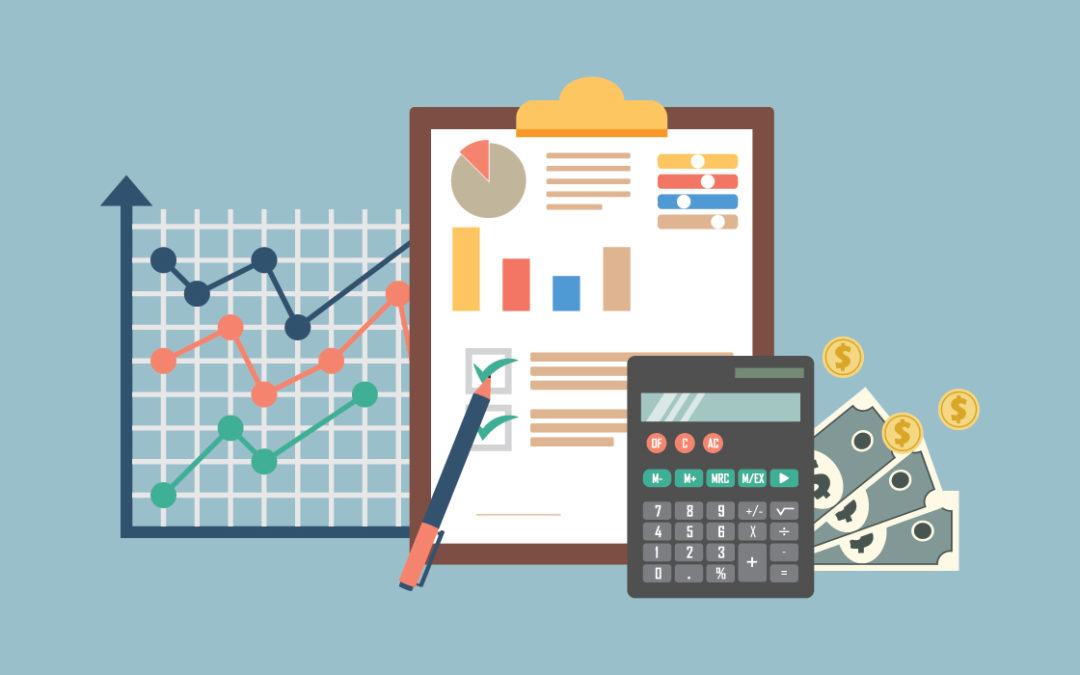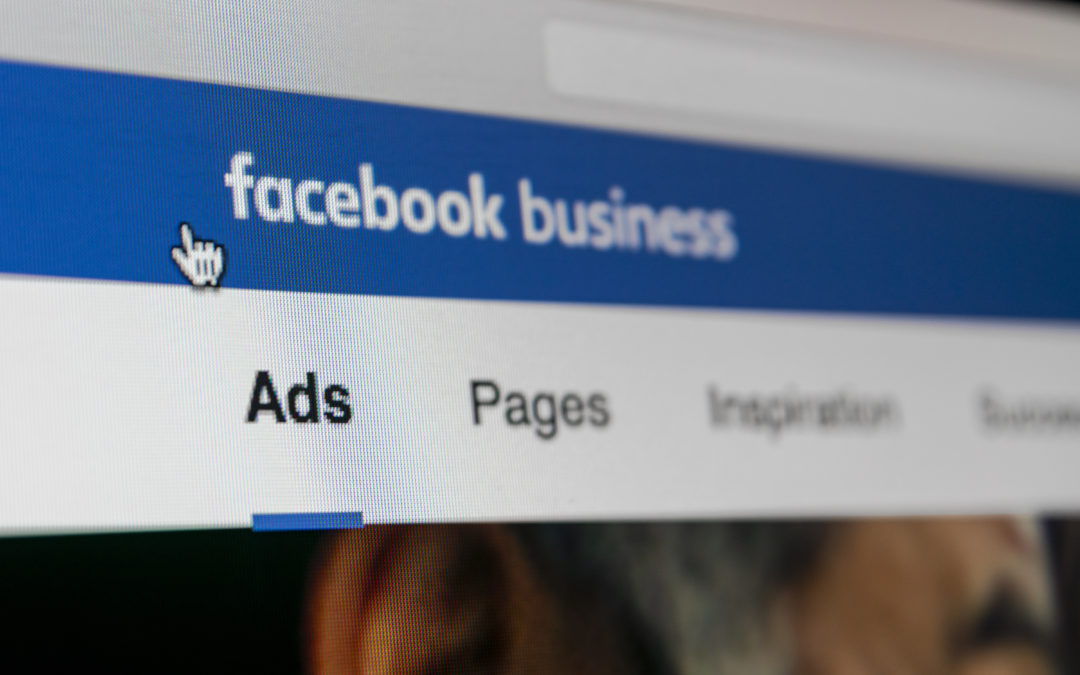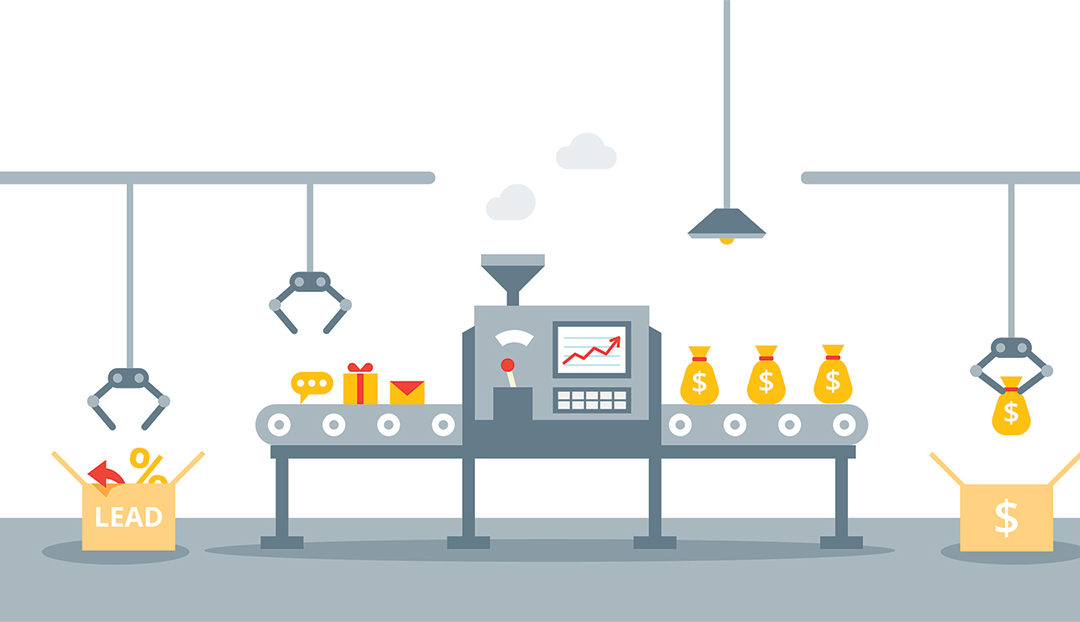
How to Reverse Engineer Your Funnel KPIs
Get your free FunnelCalc here: FunnelCalc
Video Transcript:
How to Reverse Engineer Your Funnel KPIs
Sign up for the free training: How To Start A Massively Profitable Agency Managing Facebook Ads for Clients
Jordan: Now we’re going to talk about an incredibly common question and probably one of the most valuable things that you can learn because by understanding this, you’re going to be able to come across as just a wizard at Facebook ads. That’s really understanding how to reverse engineer your funnel KPIs so that you know, regardless of the funnel, regardless of the product, regardless of the industry, you know where you should be at, at each stage of that funnel in order to give you the best likelihood at achieving the end result that you want. Whether that’s breakeven ROI, whether it’s two X three X four X ROI, it’s going to give you the metrics that you need to make sure that you’re on pace for that.
David: Yeah, and this is really … I mean in a lot of ways this is really the guts of what this whole module is about because as we’ve talked about … We want to be Facebook advertisers, we want to be top 1% Facebook advertisers, but at the end of the day, clients do not pay for Facebook advertising. They pay for client acquisition. In order to be able to show and understand and prove your value in client acquisition, you can’t be limited to just understanding the metrics that exist inside of Facebook. This is really the crux of how do you understand the rest of the funnel and how do you use that understanding to work backwards to really inform great decision making. Jordan, to your point, it is kind of a little bit of wizardry. Most local entrepreneurs and even a lot of bigger business entrepreneurs don’t understand these things. As you start to to uncover these things and help them put this map together, they’ll be blown away by it and it will really increase the trust that they feel for you in terms of running their ads, but also advising them in other areas of their business.
Jordan: Yeah and so after you map out your funnel for your client, the next step that you’re going to take is to go in and reverse engineer your funnel KPIs at each step of your funnel. Before I get going, KPI stands for key performance indicator. Basically, it’s just the benchmark number that you’re shooting for, which says that, okay, if based on the goals that we set client, if I hit these lead numbers, these appointment numbers, whatever that number looks like, if I hit this, then I’ve upheld my side of the bargain. I’ve done what I need to do. The rest is in the hands of your sales team, your website, whatever that looks like, but it says, okay, I’ve done what I’ve committed to doing for you. Now obviously you client need to uphold your side of the funnel as well. What this will allow you to do is it will allow you to build a profitability roadmap along your funnel so that you know at every stage of your funnel, based on what your KPIs are, you know whether or not you’re on track to hitting your goals, you’re way off track.
Jordan: You need to make corrections accordingly. If your actual KPIs are underperforming, you’ll know the exact stage of your funnel that needs to be optimized. This is a really great point that I didn’t mention is let’s say you’ve been running a campaign for two weeks and it’s not profitable. There are 700 things that could be causing that funnel to not be profitable. If you don’t understand and know what your KPIs roughly need to be at each stage of the funnel, you’re not going to know where to start, right? The issue may be an ad to landing page problem, but if you don’t know, okay, roughly I need to be at a $7 cost per lead for this funnel to work and I’m actually at a $24 cost per lead that tells me immediately it’s either an ad problem or a landing page problem or a combination of both.
Jordan: It has nothing to do with the rest of the funnel, no matter how optimized this is. If I needed to be at $7 up here and I’m actually at $24 there’s just no chance it’s ever going to be profitable and so it helps you make sure problem solving decisions as well. Most importantly, when you understand how to do this, you’re going to have an instant realtime view into the projected profitability of a funnel as opposed to like in the example before running traffic for one week, two weeks, and then only after that two week period of time do you find out, oh, it turns out I actually lost a bunch of money. You’re going to be able to correct and optimize your funnel in near real time once you understand how to do this. Initially when David and I were putting this module together, we were going to whiteboard this all out. Then I realized that in the past, every time I’ve kind of walked through this white boarding exercise, everyone is like, their minds are blown. They’re like, “That’s amazing. Now how do I actually do that for my business, for my funnel?” Right?
Jordan: What David and I actually did was we went a step further and we just built you out a calculator that you can use for any funnel that you’re running traffic for. David, do you kind of want to give an overview of this calculator?
David: Yeah, for sure. The first thing that I want to say is like for those of you that are not spreadsheet people and you just saw this and you like, threw up a little bit in your mouth, we tried to really limit this so that the number of inputs that you have to focus on in this calculator are as limited as possible. All the math is already done. You’re not going to have to do calculations. You’re not really going to have to think about any of that stuff. You’re going to be able to match your funnel up, plug in a few of these numbers that are in gray, and it’s going to be able to tell you what your estimated costs are, what your costs need to be at every stage of the funnel. Let’s start with the first one.
David: We’ve got a webinar funnel and this is a five step funnel. The first step that we’re talking about is, okay, we’re going to run an ad. The second step of the funnel is the number of people that are opted in or what’s our opt in rate? Step three is going to be web attendance. The number of people that actually show up and watch that webinar. In this funnel, the next stage after watching the webinar is to schedule a call with a salesperson, so that’s step four. Then step five is the number of people that are actually purchasing the product. Okay, so those are the five steps of the funnel. Then we’ve got a couple of things out to the side as variables. The first variable would be the product price. We’ve got to know that, right?
David: Because there’s a big difference between a $3,000 product and a $300 product. In this example, we’re using a $3,000 product. Then the other variable is CTAC and that’s cost to acquire a customer. There’s really two different ways to look at this number. It’s also sometimes called return on ad spend. It just depends on which way you do the math, but CTAC is basically what, what does a client willing to pay to acquire a customer? We’re entering this as a percentage, not as a dollar amount. The important thing here is that regardless of whether it’s a $3,000 product or a $300 product, there is an acceptable cost that every business is willing and able to pay to acquire a new customer. Interestingly, we’ve listed all of these at 100% and that is not on accident at all. A lot of times customers, when they want to start running Facebook ads, they have a dream that’s not necessarily realistic, which is, okay, I’m doing, let’s say a local business is doing $300,000 in business a year and they spend $0 on marketing.
David: Well, they look at that and they go, well, it basically cost me nothing to get these customers. Now if I’m going to go on Facebook, I’m going to start running ads, I should be able to make a 10 times return on ad spend, right? Or for every dollar I put in, I want to get $10 out because they have unrealistic expectations. What I want to lay out for you at this point is that a good starting point for all of your conversations related to cost to acquire a customer is one-to-one. It’s 100%. Most businesses that are mature businesses in mature industries should both be willing and are probably going to be required to be able to spend up to a 100% of the first sell to get a new client. Okay, so with that Jordan, I’m going to stop and let you kind of take the next pass at this in terms of like, okay, webinar funnel.
David: We’ve talked through what the different steps are. Of course you’re going to map that to your own funnel. Now let’s talk about how we actually take this through and do the math.
Jordan: Yeah, totally. So you know, just to, to touch on this cost to acquire a customer number again, so this percentage here is the percentage of the product price that your client is willing to spend. In this case, this is 100% which also is 100% return on ad spend. The client is willing to spend 2,997 to get a 2,997 purchase. Assuming the client wanted to be at, let’s say a 200% ROI, that would mean that the clients were willing to spend up to 50% of that order value, so you’d drop in 50% here and you can see that all of these numbers change. These gray numbers are the inputs that you’re going to want to fill in for your funnel. For the sake of this, we’re just going to say, “Hey, we’re fine being breakeven on acquiring that customer because we know that we’re going to be able to sell them additional things down the road.” That’s how most businesses are run. In fact, many businesses, especially in the eCommerce space are willing to spend upwards of 200% to actually acquire that customer just because the long tail is so important there. That’s cost to acquire a customer.
Jordan: Now for these steps, we’ve put in some general benchmarks here. You’re going to want to have a conversation with your client around what these benchmarks look like. If your client has no idea what these look like, that’s a red flag. If your client doesn’t have a funnel in place, that’s probably almost a deal breaker. We’ll get into that later, but ultimately your client should have a decent idea at what these benchmarks look like for them.
Jordan:
They should have some sense of, you know, if they’ve ever run a webinar in the past, they should have a sense of, okay, how many people on your webinars actually scheduled calls? How many of those people actually purchase the product? We put in those benchmarks here. Really what you do is you work your way backwards. We started this to $2,997 product. Then if 25% of those people purchase that 2,997 products. If 25% of the people who get on a call actually purchase, that means that we can afford to spend up to $450 per call scheduled, right? If 15% of the people who attend the webinar actually schedule a call, that means that we can afford to spend $135 per webinar attendee. If 30% of the people who opt in actually attend the webinar, that means that we can afford to spend $40 per opt in.
Jordan: Now, as a Facebook advertiser, primarily in most client relationships, you are going to be responsible for the lead gen. It’s important to be able to speak to these other metrics that’s going to separate you from everyone else. But unless you’re having a higher ticket, more engaging client relationship, you’re typically going to be responsible for steps one and two of any given funnel, which means you’re going to walk through this process with your client and you’re going to get them to agree to these numbers. If that’s the case and they agreed to this, then you are responsible as a Facebook advertiser for driving leads that are less than $40.
David: Yep.
Jordan: I mean I’ve run into this scenario, I’m sure you can speak to this as well, David. There will be times when you’re driving leads at significantly less than $40 a lead. Maybe it’s $10 a lead and it turns out that the client is actually extremely over confident in how well they can actually close those clients.
David: For sure.
Jordan: [crosstalk 00:11:34] are going to get pissed at you, but this gives you insurance that allows you to say, okay, if we need to reevaluate this funnel, that’s fine. We can, but just understand that I am delivering on what we agreed upon.
David: Yep. This can be just super powerful to walk your clients through, so let’s just play with some of these numbers, Jordan, just so that people can get a sense of it. Let’s say, okay, right now based on this funnel, $3,000 price point and these opt in and attendance rates, we can spend about $40 per opt in, right?
Jordan: Yep.
David: What if we work on our opt in rate and we get that up to 40% how does that change? Okay, we went from 30 to 40 now we can spend $54 per opt in, right? What if the client comes back and says, “I can’t sell this product. I’m going to cut the price down to 1997.” Well you just went from being able to spend $54 to now you can only spend $36, right? You can just get a real fast sense just using this calculator coming in here and you know also start to realize how stinking important the rest of the funnel is to you as an advertiser, you’ve got to have an understanding of the rest of this funnel.
David: You’re going to at least speak intelligently to it because there’s a lot we can do to change that opt in rate and that costs upfront, but so much of that is based on what are they willing to spend CTAC. Another thing here would be like it is a really common thing is what if a client says, “Well, I only want to spend … I want a five to one return on ad spend.”
David: You would put 20% in CTAC. Okay, well now we can spend $7 okay? You may be able to buy leads for $7 but you may also not even be able to buy $7 leads, in which case you would basically tell somebody if this is all you’re willing to spend, if your CTAC has to be 20% I don’t think I can get you results because I don’t think I can buy leads in your industry for $7, right? That’s why this can be a super powerful conversation.
Jordan: Yeah, exactly. I mean that’s a webinar funnel. Let’s drill down into some other funnels. We can take a look at a gym funnel here. This is a gym funnel where it’s an ad to an opt in for some sort of free personal training session with the intent to have someone have a great personal training session and ultimately enroll them into the gym for a year long membership.
Jordan: Now it’s really important here that for a gym specifically or really most subscription products you’re never going to be … I shouldn’t say never. You will almost never be profitable on the first month. Really what you need to understand is that if this company, whether it’s a gym, software product, whatever, if they want to drive traffic via ads, they have to be willing to at least look at a one year LTB because there’s really just no way to subscribe people into a low ticket monthly offer, subscribe cold traffic into a [inaudible 00:14:29] to get monthly offer via ads profitably, just not possible. What we have for the product price here is the gym one year value. Obviously if the individual remains a member for longer than a year, then that’s pure profit and pure upside, right? We’re assuming that the gym is fine being breakeven over the first year of a membership.
Jordan: We just did same thing as the webinar up above. We assume that of the people who click on the ad, 30% opt in. Of those people, 20% actually show up and of the people who actually show up and go through the personal training, 45% sign on to be members in the gym. You can see what that does to … You can afford to pay $113 per show up, $564 per membership signup, which is the same as the one year value, and you can pay $34 per lead. Now let’s say the gym really sucks at converting people from a free personal training to members and they’re only closing at 20%, then-
David: Google sheet did not update.
Jordan: Google sheet did not update, so we’ll take a look at that. You are able to spend significantly less as an opt in.
David: Yep, for sure. Then this is really … I just got to say one more thing before you jump into the econ funnel. This is really exciting to me. One of the things that I love about seeing these numbers is it actually shows you how big the levers are down funnel, and so you can really end up becoming a trusted advisor for your clients. Even though you’re running Facebook ads, you can be like, “Hey guys, do you realize that every in-person show up that comes into your gym is worth $113? Do you think it might be worth staffing just a little extra during your busy hours? Because I’m sending you five people a day, and some of those … ” It’s like when you help a business understand every person that walks in is worth $113, that can actually create business operations change, not just advertising change.
Jordan: That is really how you become more sticky and how you really embed yourself with a client is being able to offer those little insights. Because those little insights, you can’t sell those as standalone. It’s like, “Oh, I’m going to give you all sorts of little insights throughout our working relationship.” That’s never going to close a client, but that will maintain the relationship with the client over the long term and I know that’s something that really differentiates you and your agency, David, and that’s something that you’re really good at.
Jordan: Taking a look at the eCommerce funnel, this is a very simple funnel, right? Low ticket product for 150 bucks, so someone sees an ad of the people who click the ad, 15% of the people who see the landing page are actually going to add that to their cart. Typically, in the average eCommerce sales funnel, you get a 60% cart abandonment rate and so 40% of the people actually complete the purchase. Based on that, again, we’re assuming we’re fine being break even. That means that we can afford to pay $23 per add to cart and $150 per purchase.
Jordan: Now, this is actually a really important metric if you’re running eCommerce ads because typically when you’re just starting out, that first optimization you’re going to make is for an add to cart. If you don’t do this math ahead of time, you’re going to have no idea whether or not your add to cart numbers is within KPI or not. This is really powerful for any eCommerce funnel that you decide to run.
David: You can take this and we wanted to make sure that we give you a five step example, a four step example and a three step example with the hope that you can use this and you’ll be able to match that to your funnel. All you got to do is go in and change okay, is it an opt in, is it a web attendee or whatever, but you don’t actually even have to change the math. You really literally can change the labels to match whether you’re working a one or a three step, a four step or a five step funnel. You come in, you’re able to fill in just simply the numbers in gray, which is four, five, six numbers, and you’ll have a very accurate picture of how your funnel needs to perform and how you fit into the overall funnel with the traffic and the ads that you’re driving.




